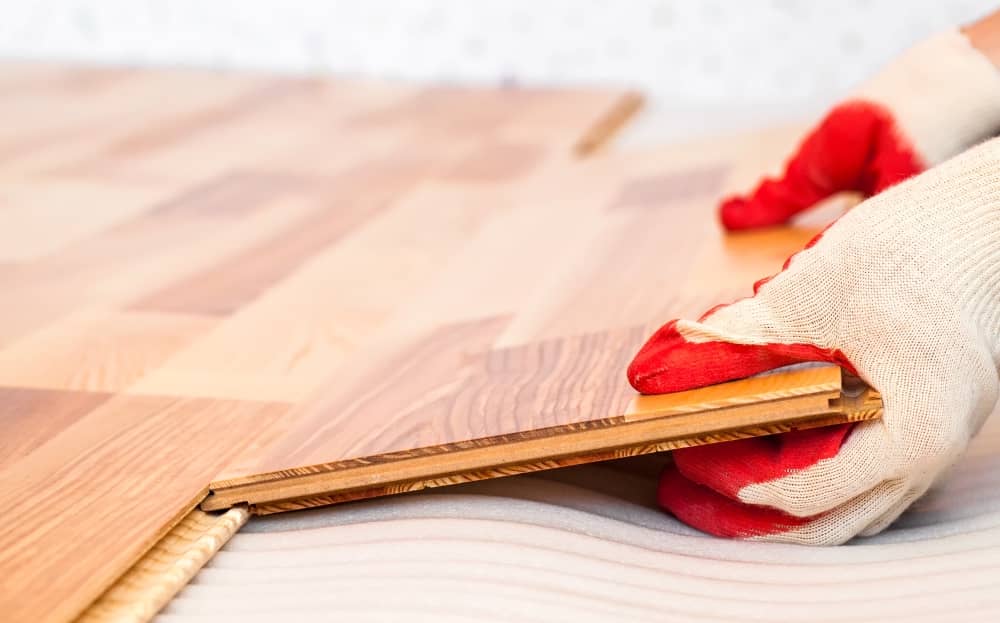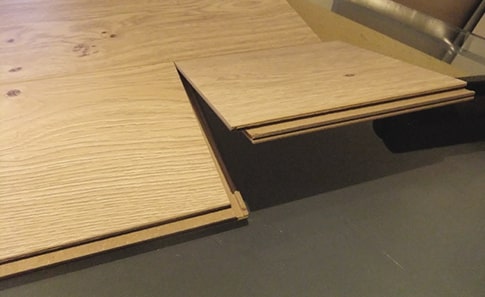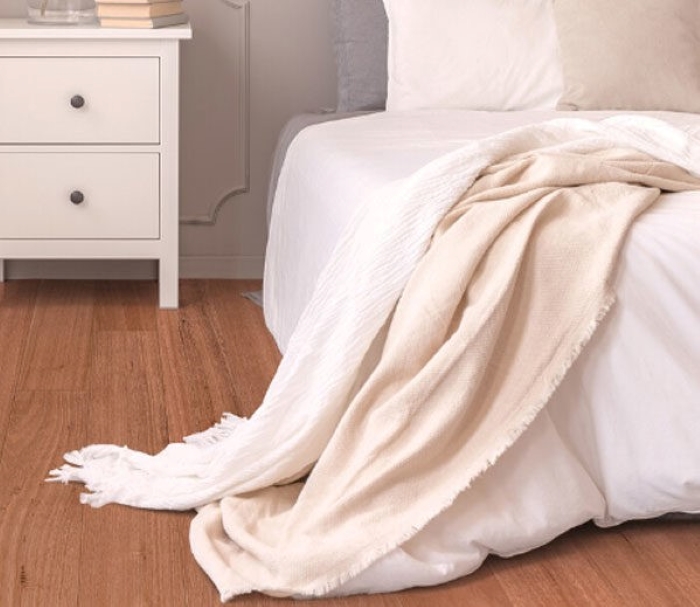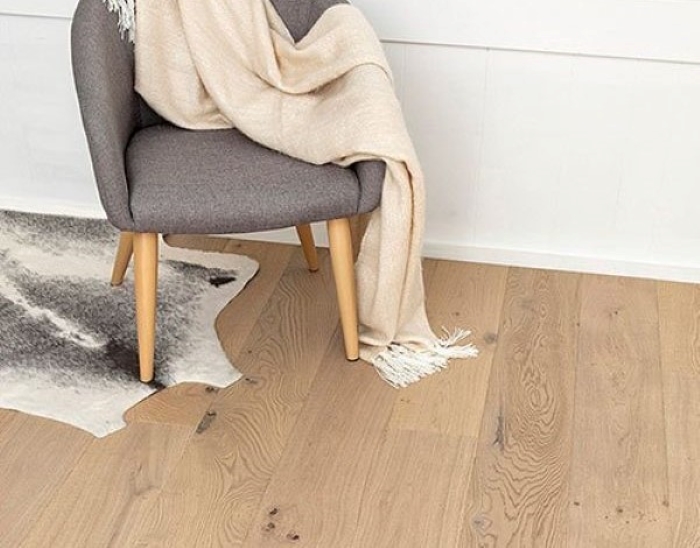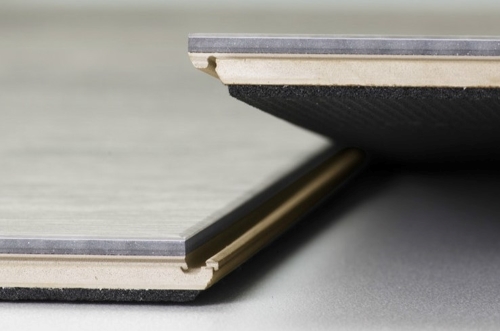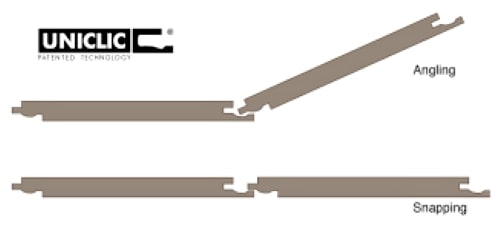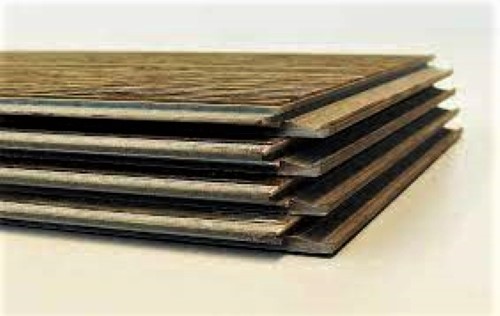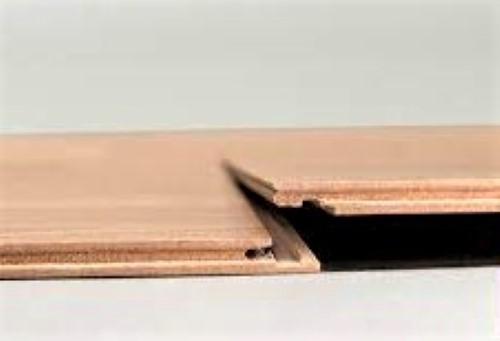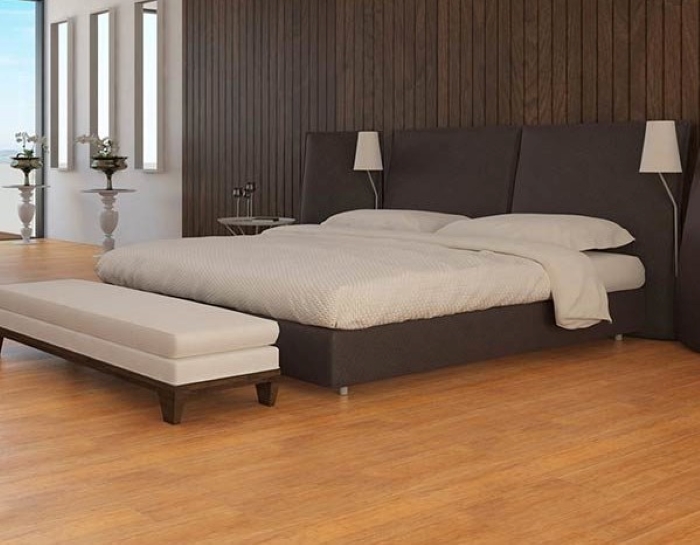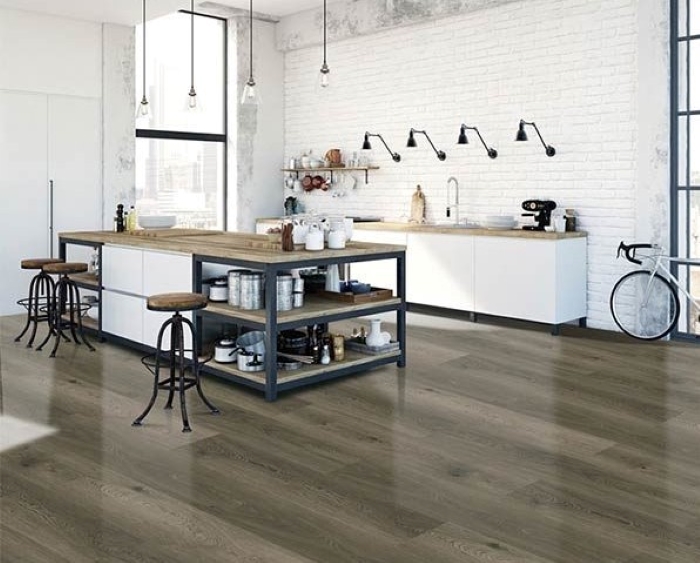Last updated 30/1/24
Have you heard about “click in” or “lock” flooring? Since the early 90s, flooring installation technology has taken the world by storm and made DIY installation a reality for the normal person. And it’s easy to see why, as it makes floor installation a snap! In this blog post, we’ll lay it all out for you. Learn about click-together flooring and the most popular floor locking systems and how they differ.
We’ll also recommend which to pick for your current or upcoming flooring project.
Overview:
- What are Floor Locking Systems?
- Click Flooring Advantages
- Is Your Floor Suitable?
- Types of Locking Systems
- Choosing a Locking System
What is a Flooring Locking System?
As mentioned above, click-in (also known as lock) flooring is a method of flooring installation that has been around for about 30 years. It has several names, including click-clack, snap-together, click-together, click-lock, clip-together and interlocking flooring. Typically, though, it is best known as ‘Click Flooring’ for tradies or ‘Click in Flooring’ by customers. Whatever name you choose to use, the premise is the same. It’s used to cover existing flooring or sub-floors in a predominantly floating installation. Click Flooring is available in popular materials such as Laminate, Hybrid and Engineered Timber.
What Makes It Click Clack Flooring?
If you have seen how this style of flooring is installed, you will immediately understand why. Unlike other flooring options, the boards click or lock together, so you do not need to use nails, glue, or staples. With this method of installation, it’s understandably deemed the most straightforward. That’s why Click Flooring systems are perfect for those who prefer to go the DIY route.
There are various types of floor locking systems available. However, they are all installed similarly, using a method known as the ‘Floating Installation’. This style of flooring has a joining system that, on the surface, seems similar to the traditional tongue and groove method. The difference, however, lies in the interlocking profile, which you can observe right around the edge of each board. This feature enables the boards to be locked or clicked seamlessly and securely.
The invention of floor locking systems stemmed from the needs of inner-city Europeans who typically took all of their fittings with them when they changed apartments. Click Flooring was able to be disassembled and reassembled in a new residence, as you were able to reuse most of your existing flooring, and generally, a few new packs would allow you to finish the job off.
Homeowners also observed that their floors looked better as, when installed correctly, there were no gaps between the individual floor planks. This also eliminated the differences in height between boards, which could be noticeable after installation with other products. Click-in flooring systems immediately solved these issues, which is why they have become such a popular installation method.
Why Choose Click Together Flooring
You may think that using glue & adhesive is a better option than click-lock.
But here are five advantages of locking systems over the traditional flooring installation options:
1. Convenience
The ease of fitting when using click flooring is unsurpassed. The system comprises floorboards that easily and quickly interlock at the sides and ends. This means it snaps together without using glue or nails, making click system floors incredibly simple to lay.
2. Fantastic Options
Click flooring systems are available in several product options. Hybrid and laminate flooring are exclusively click flooring. Engineered timber is also available more in click flooring options than with traditional tongue and groove. This means that regardless of whether waterproof, hard-wearing or realistic-looking are your main concerns, you have a clip lock flooring option.
3. It Helps Resist Moisture
When installed correctly, the surface of click lock flooring becomes watertight. This means that even if the product’s core is not waterproof (in the cases of laminate and engineered timber,), the locking system will help prevent moisture ingress for a longer period than traditional products.
4. The Floors are Easy to Re-Lay
Click-locking systems are excellent for the handyman in you. It’s quick to install and offers the ability to lift and re-lay the boards. That way, if you love the floor you have and you are moving; you can take your floor with you!
5. It’s Less Restrictive When Compared to Direct Stick Flooring
Direct stick is challenging for the layperson. Adhesives must be applied with a specific depth and have a working period. If you lay too early, they don’t bond properly. If you lay too late, they don’t bond at all. Additionally, if adhesive comes into contact with the floor, it can mark your floor permanently. With click flooring, you have none of these concerns.
This blog reviews the pros and cons of both methods relating to engineered timber flooring.
Is Your Floor Suitable?
The main thing to look for if you are going to install click flooring is a level subfloor:
- This is required for all flooring types but for different reasons.
- An unlevel subfloor will stress the joins of your flooring, and over time, they will break, causing the product to fail.
- Always read the flooring manufacturer’s installation requirements and follow them to the letter. If you do not follow these requirements and you have an issue with the floor, the manufacturer will do nothing more than wish you well.
- Even if you think a floor looks level, always use a straightedge to check how level it is, as you simply cannot detect subfloor intolerance with your eye alone.
Types of Click Floor Systems
Three main locking systems are in use in the Australian market today, although others do exist.
However, they are all based on at least one of these three principles:
2G Locking Systems
- Välinge 2G is a simple click-locking system that does not use glue. This system is also known as a ‘Drop Lock’ system.
- The floor does not lock on the end in the same way that it does on the side.
- The end join has a ‘saddle’ type arrangement, where the top board simply folds down onto the lower board.
- This saddle prevents horizontal movement but not vertical movement. However, once a new board is engaged on the side, the board can no longer move vertically.
- The final row is then held down by your skirting or scotia.
This system has been very successful in laminate, hybrid and bamboo flooring. Most bamboo manufacturers learned that after years of using 4-sided locks such as the Unilin system, the 2G drop lock made for the easiest installation. Any product that can sit flat under its strength is very successful in the 2G format.
Engineered timber, though, can be quite fickle due to its multilayered construction. This can cause lateral stresses on a board when certain core types are used, and with the end not being properly ‘locked’, the ends can sit up higher than the sides of the boards, which exposes them to damage.
4-Sided Locking Systems
Many companies have offered 4-sided locking systems, but the winner in this race was ‘Unilin’ with their UniClic Locking system.
- These systems work by utilizing a very similar (if not the same) joining profile on the end of the board that they use on the sides of the board.
- Most of these systems require that you lock an entire row of flooring together and then lock this entire row into a neighbouring row. If the row was long, this could take many people to engage properly and could be a nightmare for the DIY-er.
- Most of these styles of locking systems would not allow a board to be put flat on the ground and fitted into another.
You would always require an angle on the installation, and this made for a dreadfully difficult installation.
The UniClic system changed this game because of its ability to be placed flat on the ground and tapped into place on either the end or side. Layers would usually install the board on the side in the traditional manner and then tap the end of the board up and into place with a hammer and tapping block. Skilled installers worked out a method of engaging both the side and end in a single motion, but this required much practice.
This has probably been the most successful locking system with engineered timber flooring. This gave the strongest possible join in all directions and meant that a timber floor would remain level on both sides and end under stress. It was also possibly the most common locking system in laminate flooring and has been successful in both bamboo and hybrid Flooring.
However, with Bamboo, because the flooring was so strong laterally, the 2G system made for an easier installation. With Hybrid, 4-sided locks can have issues on end, joined with uneven subfloors, as due to the intricacy of the locking system, they can be quite brittle on a hybrid floor. However, if you follow the manufacturer’s installation requirements, this will not be a problem.

Expert Insights From Dean Billett
28+ Years of flooring industry experience
The quick step uni click systems from premium floors are patented technology and are often regarded as the best in the world. Other brands buy the rights to use this patent on other products. This system clicks on all four edges of the board and is a tough product to pull apart.
5G Locking Systems
The Välinge 5G system brought the worlds of 2G and 4-sided locking systems together:
- Using a very cleverly constructed, spring-loaded plastic shim on end joins, the 5G system uses a fold-down installation like a 2G locking system.
- However, as the end of the board is brought down into place, and through some very clever machining, this shim retracts as the board is dropped down, and then shoots back into place into a slot cut into the neighbouring board.
- This means that the 5G system ‘Locks’ into place like a 4-sided lock but has the ease of installation of a 2G system. While the end lock is not as strong as that of the 4-sided lock, the additional ease of installation was considered a more than acceptable trade-off.
While all locking systems are licensed, the additional cost in the 5G system means it has not seen as much action as other systems.
The 5G Locking System has succeeded in all flooring types but was not used in bamboo. While there were 5G options available, it was always considered that Bamboo was more than strong enough laterally to utilize the 2G system successfully. Otherwise, if the flooring is typically at the better end quality-wise, it will incorporate the 5G system.
Clip Together Systems For Your Home
The type of locking system that will work best for you in wrapping up depends on the flooring you choose to install. Each has pros and cons, but all systems will work across all flooring types. Some systems will work better with some flooring types than others.
Engineered Timber
- 4-Sided Lock: This is probably the best locking system for timber flooring. While it is not as easy to install as the others, the fact that the end join is stronger than others is the most important factor in this category.
- Välinge 5G: This one while it locks on the end, is not as strong as the 4-sided lock. However, it is faster to install.
- Välinge 2G: Very easy to install, but the lack of end join means that boards can sit higher than others in certain weather conditions. Many floors that used this system would often have their veneers damaged. This can be especially catastrophic in Micro-Veneer timbers.
Bamboo
- Välinge 2G: This was and still is the most successful locking system with bamboo flooring. Because bamboo is so strong, the need to lock the end was not considered an acceptable trade-off against how easy Installation is with 2G.
- 4-Sided Lock: This system was used early on in bamboo flooring and gave no issues to the product. However, having to lock the end of the product was a redundant feature, and just slowed down installation.
- Välinge 5G: For the above reasons, this system saw the least action in bamboo flooring. The extra strength on the end was not required, and because it is in most ways the same in installation as the 2G, the extra cost of the 5G system was considered not to be money well spent.
Laminate
- Välinge 5G: Because this system was a latecomer, it was only used in later laminate versions. However, the 5G is the perfect lock for laminate flooring that does require some form of lateral restraint on the end of the board but makes installation much easier than the 4-sided system.
- 4-Sided Lock: For the longest time, this was the most successful locking mechanism for laminate flooring. The 4-sided lock has the strongest end join, but the additional time that it takes to install puts it in second place.
- Välinge 2G: Very easy to install, but not as safe as the 2 above as thinner laminates (8mm and below) that are in a wide format benefit from lateral restraint on the end of the board.
Hybrid Flooring
- Välinge 5G: Considered by most to be the best option for hybrid flooring. The fact that this mechanism can be engaged with your hand without using a mallet means that potential damage to the floor is reduced to nothing.
- (Modified) Välinge 2G: The modified 2G system that is used in hybrid flooring (sometimes called 5Gi) is a modified 2G system that locks the end of the board in place, but is only possible in a hybrid floor due to the kind of core used in the flooring. This system is probably the most common in hybrid flooring, but using a mallet during installation makes the ends of a brittle product more prone to damage.
- 4-Sided Lock: This is the least common system in hybrid flooring, as due to the brittle nature of hybrid flooring, can be very easily damaged during installation. Additionally, on an uneven subfloor, a 2G or 5G product is more likely to disengage, whereas a 4-sided lock is more likely to break.
As you can see, each of the above locking systems will work with every category of flooring; it is just that some have advantages when paired with the right product. If you are having an installer do the job for you, then it is their responsibility to know what they are installing and how to install it. Oftentimes, when an installer recommends what flooring you should purchase, it is not based on any other fact than how easy it is for them to install. This should not be a concern for you, though, as you are engaging a trained professional.
If however, you are going to have a crack at installing the floor yourself, consider the information above and pair it with your requirements. You may find at times that your situation makes the kind of system that you would use fall outside of our comments above. Treat what we have said above as a guide, but if you have doubts, then pick up the phone!


